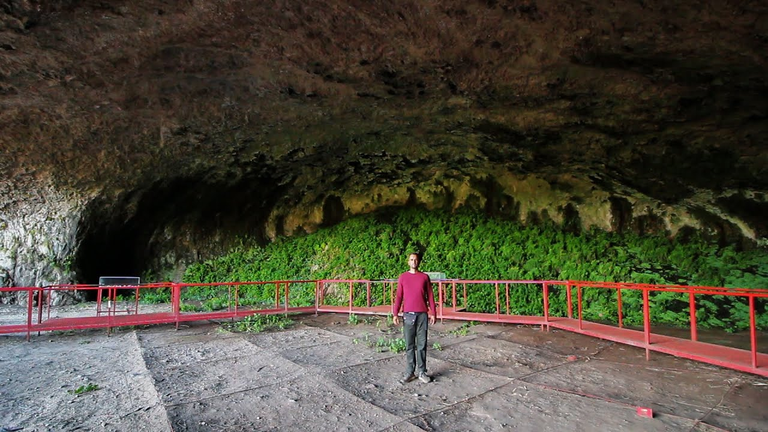
The Intihuasi Caves are located in the Coronel Pringles Department, part of the Comechingones mountain range system.
The importance of this location helps us to understand the culture of Ayampintín, because it is located between the agricultural-pottery cultures of the Northwest and the hunters of the Pampa-Patagonia.
In Quechua, Inti huasi means "house of the sun."
A wide arcade served as a defense against the summer sun and the winter rains .
This arcade being the driest and brightest place in the entire cave, it must have been the meeting place for the inhabitants who populated it at different times.
Man arrived at these sites when the temperature had reached such extremes that it generated a process of desertification and the Lakes Basin was greatly diminished.
The INTI HUASI disappeared to reappear 300 years later, in 5,900 BC , when the region had acquired its current appearance, to dedicate themselves to hunting and the gathering of fruits, such as those of the carob tree.
From that moment on, life in the Puntano territory was transformed and was reduced to the margins of the Sierras of San Luis.

Las Grutas de Intihuasi se encuentran situadas en el Departamento Coronel Pringles integrando el sistema de la sierra de Comechingones.
La importancia de esta ubicación nos ayuda a entender la cultura de Ayampintín, debido a que se encuentra entre las culturas agro-alfareras del Noroeste y las de cazadores de la Pampa- patagónica.
lnti huasi significa en quechua "casa del sol".
Una amplia arcada servía de defensa contra el sol del verano y las lluvias invernales.
Siendo esta arcada el sitio más seco y de mayor luminosidad de toda la caverna, debió ser el lugar de reunión de los habitantes que la poblaron en las diferentes épocas.
El hombre llegó a estos sitios cuando la temperatura había alcanzado extremos tales que generaron un proceso de desertización y la Cuenca de los Lagos estaba enormemente disminuida.
Los INTI HUASI desaparecieron para reaparecer 300 años después, en el 5.900 a.c., cuando la región había adquirido su fisonomía actual, para dedicarse a la cacería y la recolección de frutos, tales como los del algarrobo.
A partir de ese momento, la vida en el territorio puntano se transformó y quedó reducida a las márgenes de las Sierras de San Luis.
Scientific interest. / Interés científico.
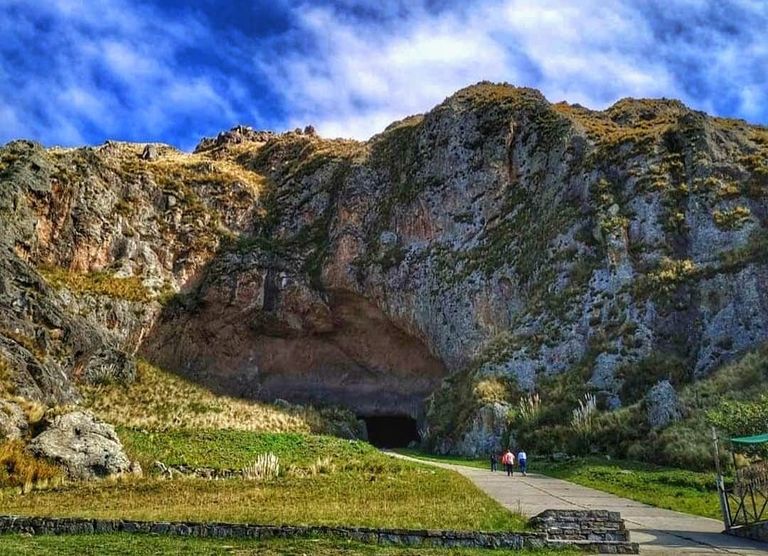
Scientific interest in the site dates back to 1875, when it was studied by the German geologist Luis Brackebusch, who published a voluminous study on the San Luis mountain ranges.
At that time, the site served as a corral for cattle, goats and horses, who deposited a considerable amount of sediment with their feces, which was removed during the exhaustive archaeological excavations directed in 1951 by the Argentine archaeologist, anthropologist and doctor Alberto Rex González.

El interés científico por el sitio se remonta al año 1875 cuando fue estudiada por el geólogo alemán Luis Brackebusch quien publicó un voluminoso estudio sobre las sierras de San Luis-
En ese entonces el recinto servía como corral de bovinos, cabras o equinos quienes depositaron con sus heces un considerable sedimento que fue removido durante las exhaustivas excavaciones arqueológicas dirigidas en 1951 por el arqueólogo, antropólogo y médico argentino Alberto Rex González.
Current appearance of the Inti Huasi cave. / Aspecto actual de la gruta de Inti Huasi.
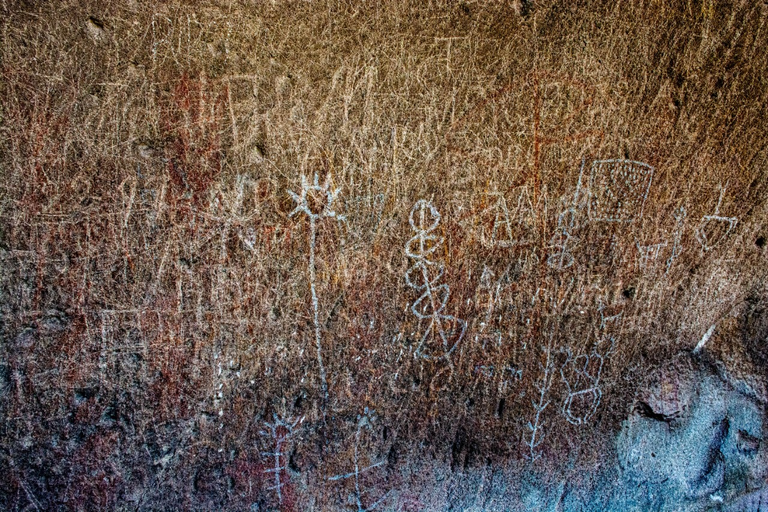
The archaeological excavation gave surprising results on the history of the cave, identifying in its oldest strata the contexts of the pre-ceramic Ayampitin culture, dating the remains of the lower stratigraphic levels by the carbon 14 method, the first carried out in the Argentine Republic. The results of the radiocarbon tests dated the antiquity of the first human settlement in the cave to 6200 BC. C.
The San Luis Provincial Highway Department, while carrying out excavations in front of the slope of the Intihuasi Hill in 1948, due to the layout of a road that reached the site, uncovered a large number of stone objects, bone tools, cave paintings and human remains. In light of this discovery, Dr. Alberto Rex González was appointed to carry out the research work in 1951.
The cave paintings that existed on the rocky slope at the bottom of the cave were gradually lost until they disappeared completely due to water seepage in the rocks, cracks produced by seismic movements in the area, the most important of which occurred during the 1970s.

La excavación arqueológica dio sorprendentes resultados sobre la historia de la gruta identificando en sus estratos más antiguos los contextos de la cultura precerámica Ayampitin, fechándose los restos de los niveles estratigráficos inferiores por el método de carbono 14, el primero efectuado en la República Argentina. Los resultados de las pruebas de radiocarbono remontaron la antigüedad del primer asentamiento humano de la gruta en 6200 a. C.
Vialidad de la provincia de San Luis, mientras efectuaba excavaciones frente al talud del Cerro Intihuasi en el año 1948, debido al trazado de un camino que llegaba al recinto, puso al descubierto gran cantidad de objetos lÍticos, utensilios de huesos, pinturas rupestres y restos humanos. Ante este hallazgo, se designó al Dr. Alberto Rex González para realizar los trabajos de investigación en el año 1951.
Las pinturas rupestres que existieron en el faldón rocoso al fondo de la cueva se fueron perdiendo paulatinamente hasta desaparecer totalmente debido filtraciones de agua en las rocas, grietas producidas por los movimientos sísmicos de la zona, siendo los más importantes los ocurridos durante la década de 1970.
Las Grutas de Intihuasi se encuentran situadas en el Departamento Coronel Pringles integrando el sistema de la sierra de Comechingones.
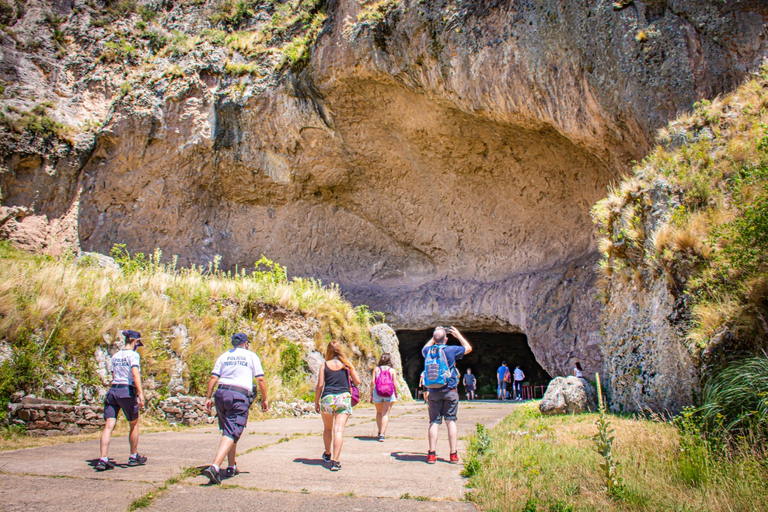
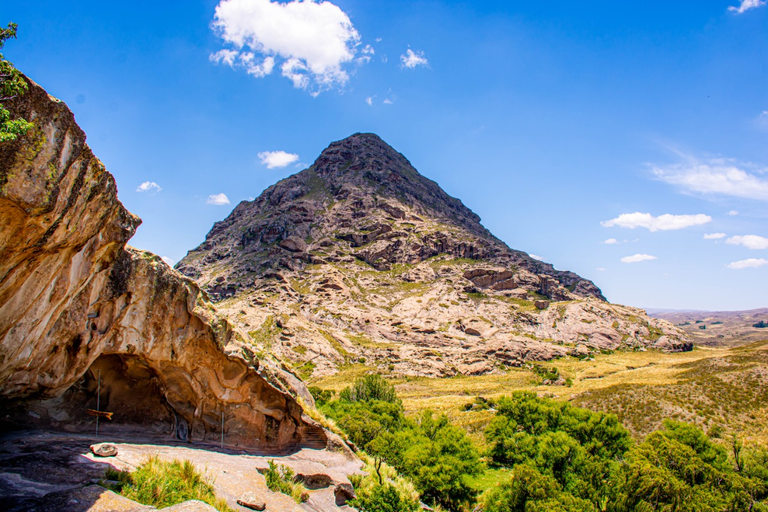
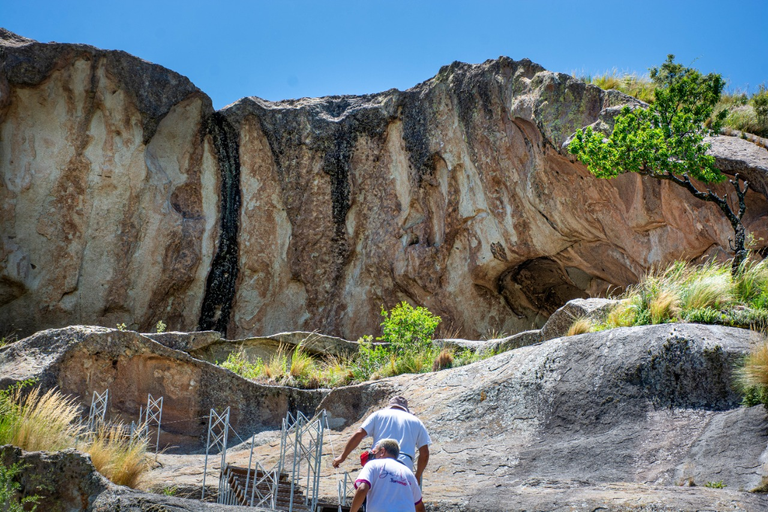
Source images / Fuente imágenes.
Sources consulted (my own) for the preparation of this article. Some paragraphs may be reproduced verbatim.
Fuentes consultadas (de mi propiedad) para la elaboración del presente artículo. Algunos párrafos pueden estar reproducidos textualmente.
| Argentina Discovery. |  |
|---|---|
| Galería Fotográfica de Argentina. |  |
| Viaggio in Argentina. |  |
| Patagonia Express. |  |
